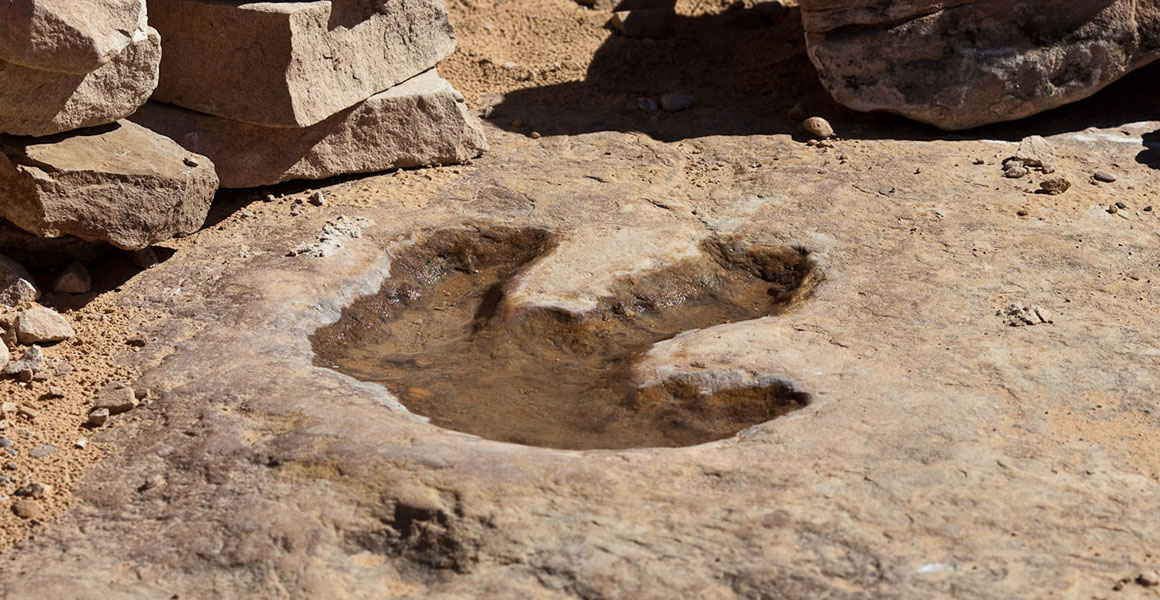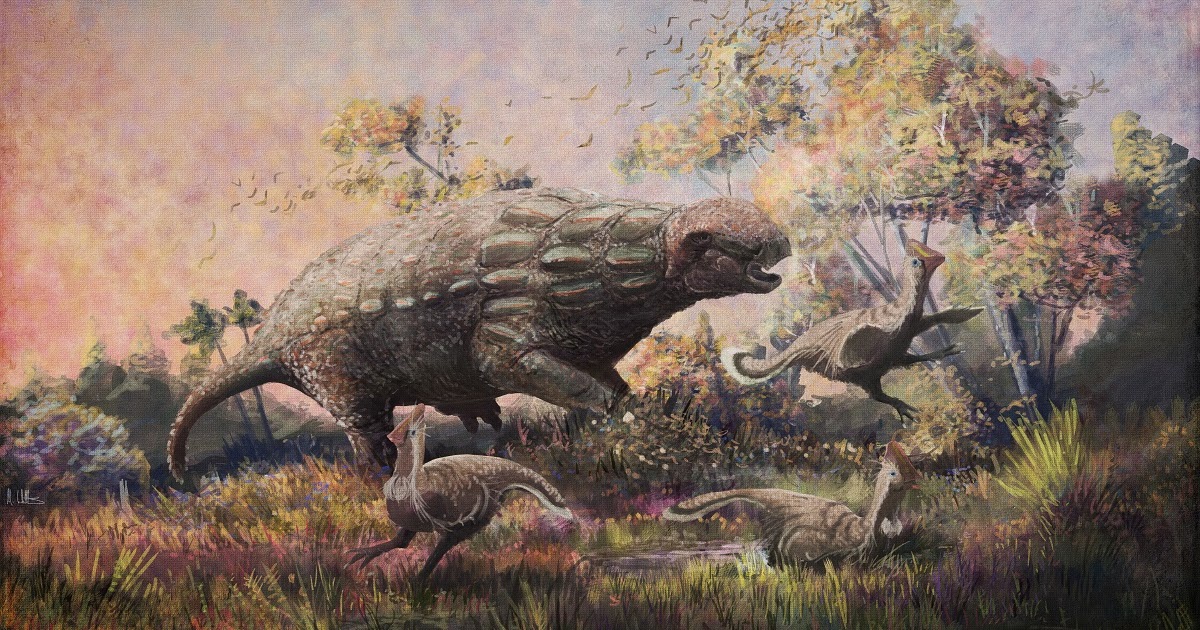Dinosaur Behavior: What Can We Learn From Fossils?

Dinosaur Behavior: What Can We Learn From Fossils?
Dinosaurs have long captivated our imaginations with their monstrous size and mysterious extinction. But beyond their physical appearance, studying dinosaur behavior through fossils can provide us with valuable information about these ancient creatures.
The Importance of Fossils
Fossils are the remains or impressions of plants and animals that lived long ago, preserved in rock. This includes bones, teeth, footprints, and even dinosaur droppings. Fossilization is a rare occurrence, making fossils a precious resource for understanding the past.
For scientists, fossils are like puzzle pieces that help them reconstruct the story of a dinosaur's life. By examining the size, shape, and structure of bones, they can determine how the dinosaur moved, what it ate, and even how it interacted with its environment.
Distinguishing Between Species
Fossils not only provide evidence of how individual dinosaurs behaved, but they also help scientists differentiate between different species. For example, the shape of a dinosaur's skull can hint at its diet, while the structure of its bones can reveal its lifestyle.
While fossils can't tell us everything about a dinosaur, they can give us clues to create a clearer picture of its behavior and biology.
Trackways and Footprints
One of the most exciting aspects of studying fossilized footprints is the glimpse it gives us into how dinosaurs moved. By examining the depth and spacing of footprints, scientists can determine the speed and gait of the dinosaurs. Trackways have also revealed evidence of herding behavior, as well as dinosaur parenting.
Recently, a dinosaur trackway in South Korea showed evidence of a dinosaur accidentally stepping on its own footprints, giving us insight into the cognitive abilities of these creatures.
Cooperative Behavior
Thanks to fossil evidence, we now know that some dinosaurs exhibited cooperative behavior, much like modern-day animals. Fossilized trackways show multiple dinosaurs moving together in a coordinated manner, suggesting that they may have hunted or migrated in groups.
Additionally, bonebeds, where multiple dinosaur fossils are found in the same location, suggest that these creatures may have lived and died together in social groups. The discovery of a large group of Maiasaura dinosaurs, with evidence of parental care, suggests that they may have lived in family herds.
The Limitations of Fossils
While fossils are an invaluable resource for studying dinosaur behavior, they do have their limitations. Fossilization is a rare occurrence, and the number of fossils discovered is a tiny fraction of the number of dinosaurs that actually lived.
Additionally, bones and footprints only tell us so much about a dinosaur's behavior. We may never know the full extent of their social interactions, mating rituals, or communication.
So, What Can We Learn?
While we may never fully understand every aspect of dinosaur behavior, studying fossils gives us a glimpse into their world and allows us to draw conclusions based on scientific evidence. By piecing together these clues, we can continue to uncover new information and paint a clearer picture of these fascinating creatures that once roamed the Earth. So, the next time you look at a dinosaur fossil, remember the incredible stories and secrets it holds about their behavior, and let your imagination run wild.
Dinosaurs Around the World: How They Adapted to Different Environments

Dinosaurs Around the World: How They Adapted to Different Environments
The Age of Dinosaurs
Dinosaurs were incredible creatures that existed on Earth millions of years ago. They roamed the planet during the Mesozoic Era, which was divided into three periods: Triassic, Jurassic, and Cretaceous. These giant reptiles lived in a wide range of environments, from lush forests to dry deserts. But how did they adapt to these vastly different habitats?
Dinosaur Diversity
There were thousands of dinosaur species that lived around the world, each with its own unique adaptations. Some were small and agile, while others were massive and slow. Some were herbivores, while others were carnivores. This diversity allowed dinosaurs to thrive in various environments.
Lush Forests
During the Triassic period, the world was mainly covered in lush forests. This was the perfect habitat for plant-eating dinosaurs, such as the Stegosaurus and the Brachiosaurus. These herbivores had long necks and small heads, which allowed them to reach leaves on tall trees.
The forests were also home to smaller dinosaurs, such as the Compsognathus and the Coelophysis, which were both agile and quick. They were able to hunt and scavenge for food in the dense vegetation.
Dry Deserts
The Jurassic period brought about drastic changes in the Earth's climate, resulting in the formation of vast deserts. These arid environments were a challenge for dinosaurs, but some were able to adapt and thrive.
The Spinosaurus and the Allosaurus were apex predators that roamed the desert landscapes. They had adaptations such as sharp teeth and claws that helped them hunt and defend themselves from other predators.
Plant-eating dinosaurs also found ways to survive in the desert. The Camarasaurus and the Brachiosaurus had long necks that allowed them to reach vegetation in hard-to-reach places. They also had the ability to store water in their bodies, which was crucial in the dry desert climate.
Island Dwellers
During the Cretaceous period, the Earth's continents began to break apart, creating massive bodies of water in between. This led to the evolution of dinosaurs that lived on islands.
The Tyrannosaurus rex, one of the most well-known dinosaurs, lived on an island, now known as North America. Its large size and powerful jaws helped it hunt and survive on the island.
The Ankylosaurus, a herbivore with a heavily armored body, thrived on a different island and was protected from predators by its strong armor.
Dinosaur Extinction
Despite their incredible adaptations, dinosaurs went extinct at the end of the Cretaceous period. Scientists are still unsure of the exact cause of their extinction, but some theories suggest that it was due to a catastrophic event, such as an asteroid or a series of volcanic eruptions.
Although dinosaurs are no longer around, their legacy lives on. Their fossils teach us about their incredible adaptations and give us a glimpse into the diverse world they once lived in.
So, the next time you see a lush forest or a dry desert, remember that millions of years ago, it was home to some incredible creatures - dinosaurs!
Jurassic Giants: An In-Depth Look at the Largest Dinosaurs

Jurassic Giants: An In-Depth Look at the Largest Dinosaurs
Welcome to the world of giant dinosaurs! These prehistoric creatures have captivated our imaginations for centuries with their massive size and incredible power. In this blog, we will take an in-depth look at some of the largest dinosaurs that roamed the earth during the Jurassic period. So buckle up and get ready for a Jurassic adventure!
Tyrannosaurus Rex
No discussion about giant dinosaurs is complete without mentioning the king of the dinosaurs - the mighty Tyrannosaurus Rex. This predator was one of the largest carnivores ever to walk the earth, measuring up to 40 feet long and weighing up to 9 tons. Its strong legs allowed it to move quickly and its powerful jaws could crush bones with ease. It's no wonder that T-Rex is one of the most iconic dinosaurs of all time!
Argentinosaurus
While Tyrannosaurus Rex was the largest carnivore, Argentinosaurus was the largest herbivore ever to exist. This massive dinosaur could grow up to 100 feet in length and weighed as much as 100 tons. To put that into perspective, that's as heavy as 14 African elephants! Its long neck and tail helped it reach leaves high up in trees, making it a herbivore powerhouse.
Brachiosaurus
In terms of height, Brachiosaurus takes the crown as the largest dinosaur. Standing at over 40 feet tall, this gentle giant had a small head compared to its massive body. Its long neck helped it reach leaves from tall trees, and its four powerful legs supported its weight. Fun fact - its front legs were longer than its back legs, making it one of the few dinosaurs that could stand upright!
The Terrifying but Fascinating World of Jurassic Giants
The Jurassic period was a time of giants - from the massive herbivorous sauropods to the ferocious carnivorous theropods. It's hard to imagine these creatures roaming the earth over 150 million years ago, but through fossils and scientific research, we are able to catch a glimpse of this terrifying but fascinating world.
The Mystery of Size
One of the most intriguing questions that paleontologists try to answer is why certain dinosaurs grew to be such enormous sizes. Some theories include environmental factors, such as plentiful food sources, while others suggest a higher metabolic rate and rapid growth during the adolescent stage. However, the true reason still remains a mystery, adding to the allure of these magnificent creatures.
Gigantic Discoveries
Thanks to countless fossil discoveries, we continue to learn more about these Jurassic giants. In 1902, paleontologist Elmer Riggs uncovered the bones of an Argentinosaurus, but it wasn't until the 1980s that scientists fully realized its immense size. And in 1993, a nearly complete skeleton of a T-Rex was unearthed, providing us with a clearer understanding of this apex predator.
Exploring the Past to Learn about the Present
By studying the physical characteristics and behaviors of these ancient creatures, we gain insight into our world today. For example, the long necks and tails of sauropods may have influenced the appearance of modern-day giraffes. And the massive size of herbivores may have influenced the evolution of predators like lions and tigers. By exploring the past, we are able to better understand the present and the future of our planet.
So there you have it - an in-depth look at some of the largest dinosaurs that once roamed the earth. We hope you enjoyed this journey through time and that it ignited your curiosity about these incredible creatures. Who knows what other fascinating discoveries await us in the world of Jurassic giants!
Image credit: Illustration by Carl Buell
About
Welcome to JinnJot.com, your go-to hub for a wide range of captivating blogs! Whether you're curious about the latest in finance, fascinated by geology, pondering deep philosophical questions, or just want to explore the realms of religion, culture, sports, and entertainment, JinnJot has it all. It's a vibrant space where ideas come to life, and every topic is an adventure. Dive in, discover something new, and join the conversation—because at JinnJot.com, there's always more to explore!
-Djinn






